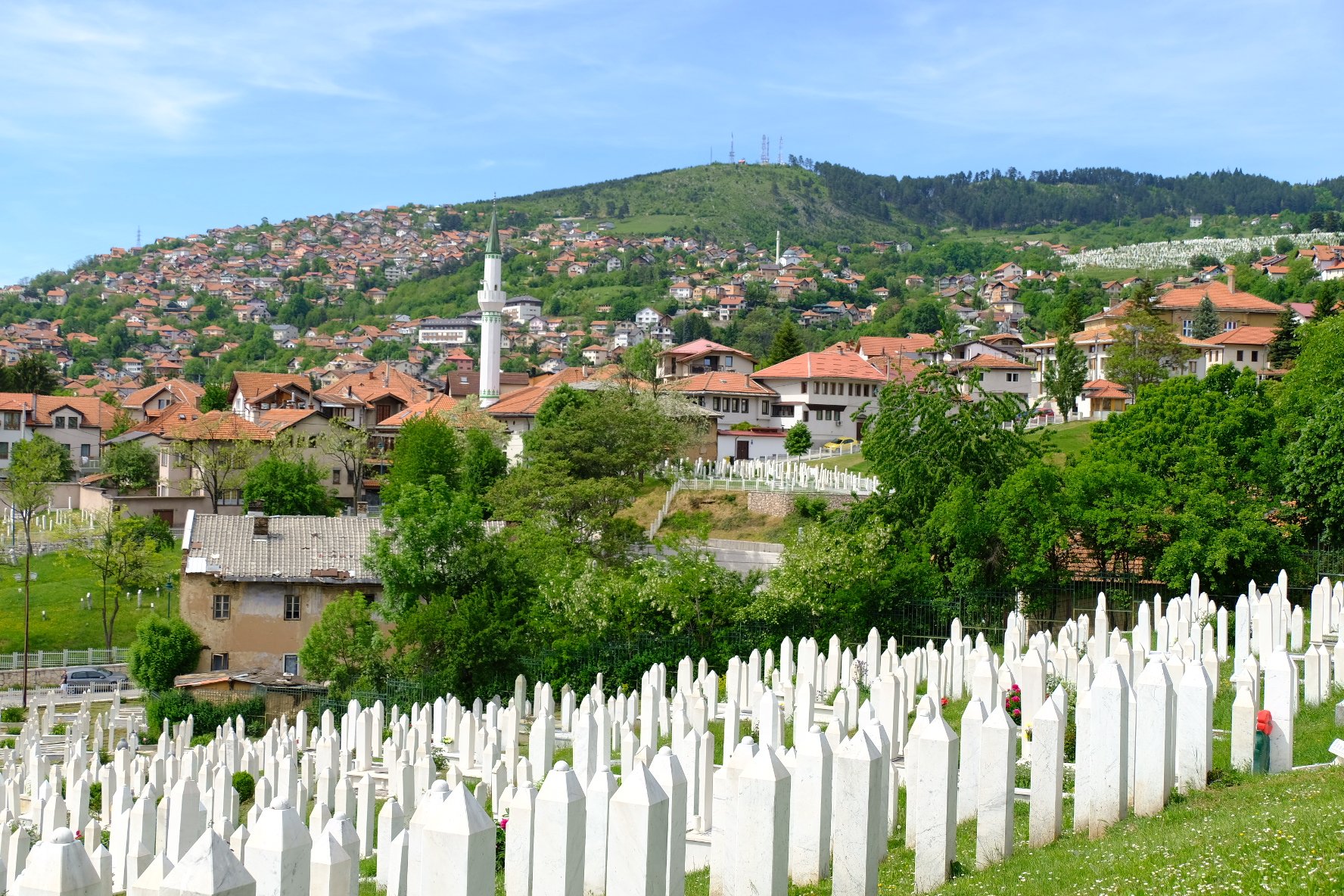Trauma-Sensitive Peacebuilding Online Course: How It Went
by Bryan Carey
Our first ever Trauma-Sensitive Peacebuilding course has officially wrapped up! This was an amazing 5-week online experience, during which we met 2-3 times a week with our lead instructors and with a guest speaker once a week. It was an incredible pleasure to work with our partner in Bosnia and Herzegovina (BiH), Amela Puljek-Shank, to coordinate and prepare the course, set up the readings, and more.
Amela, who was also our lead instructor, personally lived through the Bosnian War and circumstances that are more traumatic than we hope people would ever experience in their lives. At the same time, Amela is sensitive to the reality that each person brings their own trauma and wounds, and that ranking or comparing our traumas is not helpful. Rather, each of us has the opportunity to face our own individual and group traumas, engage with traumas, and integrate them into our stories so that we can experience post-traumatic growth. Indeed, we can heal from trauma and live into our best selves, individually and collectively. Post-traumatic growth is possible.
Trauma, its impacts, and its dynamics are present all around us, all of the time. They are at play in our own internal narratives and worlds and in our relationships with spouses, parents, and children. They are certainly also impacting intergroup dynamics in our societies in issues of justice, media narratives, political divisions, outright violent conflict, ideological battles, culture wars, and more. This course clarified that sense that “trauma is ubiquitous” and provided in-depth content as to the dynamics of trauma and harm that are constantly at play in our everyday relationships, communities, and wider society. Trauma is indeed around us all of the time.
Trauma is ubiquitous, and awareness of the ways it impacts individuals and communities is essential for anyone who works with people. This course has raised my awareness to be better able to support not only my community work but also to appreciate more fully the stories of my own family and friends.
- 2021 COURSE PARTICIPANT
Trauma sensitivity and a trauma-informed outlook help us see the brain and body connections that are at work as people experience harm and try to move toward security and wholeness. Importantly, our brains and bodies carry both the memory of trauma and harm as well as our learned bodily responses to it, even and especially when we are not consciously aware of those physical responses. As a result of experiences of trauma, our brains and bodies develop a more limited set of potential responses, so the overwhelming nature of experiences of harm and trauma can prevent us from accessing higher brain functions and therefore trap us in a state of emotion arousal that keeps us in fight or flight modes. Because the effects of trauma are literally felt in our bodies, it is essential to incorporate bodily “somatic” practices that help us reconnect with our bodies, restore a sense of safety, and allow our brains to access a wider range of responses in challenging situations. During the course, the arts, humor, and movement were often incorporated into the learning process, because these help integrate a wider range of neurological and physical responses that help us engage trauma well.
The awareness and framework that trauma-sensitivity provides is absolutely essential for anyone engaging in peacebuilding or justice work, social or pastoral work, or caring professions more generally. However, it’s much more than that. This type of awareness, taking time to deepen our understanding of trauma and its impacts as well as how we might engage and integrate trauma for a healthier future, is so beneficial for all of us as humans. This is a human need, not just for a special select few, not just for those engaged in “trauma work,” peacebuilding, or other fields, but for all of us as we seek to live out the best version of ourselves. Trauma sensitivity helps us to live well, with self-awareness about our own brokenness, physical responses, and needs, and with awareness about the internal worlds that also exist in our neighbors and communities, both “us” and “them,” especially in situations of division, whether that’s across ethnic, racial, religious, or ideological lines.
This course did just that. It deepened participants’ awareness of the reality of trauma in all our lives and the ways in which we can personally experience post-traumatic growth or live with courage in order to help our group move toward healing.
After taking this course, I am more convinced than ever of its value. This course and its content are worth investing in both with our finances and time. If you’re interested in investing your time or money to help our world become a bit more trauma-aware and trauma-informed, then consider the following:
Invest financially in a scholarship fund: Financial contributions to the course provide us with scholarships for low-income participants to attend. We had applicants from several conflict-affected countries, and we would like to make the course immediately available for such applicants. To contribute to scholarships, go to the Trauma-Sensitive Peacebuilding course page and click “Give Here” or go directly to the donation page.
Invest your time by attending the course: You can personally attend the course and invest your money and time to learn more about how to be sensitive to wounds and trauma. Our hope is to empower more everyday folks to live as healers, both individually in our personal relationships, and collectively as we heal divisions in our communities. Go to the Trauma-Sensitive Peacebuilding course page and watch for dates for the next course. We’re planning for a local language (Bosnian, Serbian, Croatian) course in early 2022 and then another English course in the spring or summer. Stay tuned.
The Trauma-Sensitive Peacebuilding online course was truly a pleasure, and I’m grateful to the lead instructors and guest speakers for giving so much of themselves to the course and to the participants.











